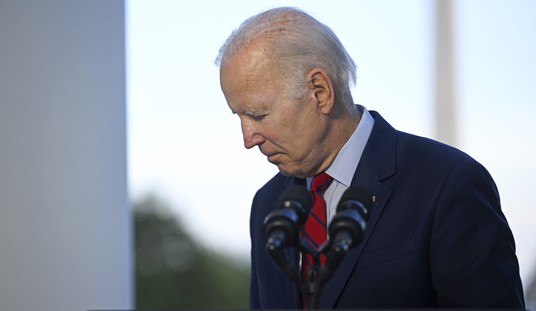Editor's Note: This column is co-written by Ken Blackwell and Sandy Froman
“Rights [are] antecedent to all earthly government …” John Adams
Advertisement
As a historic Supreme Court case on the Second Amendment looms, District of Columbia v. Heller, two unexpected perspectives show what is at stake in this case for all Americans.
Between the two of us as authors, our commitment to the Second Amendment, coupled with our real-life experiences, explodes the stereotypical images of gun owners in America. We are living proof that the Second Amendment is a blessing for all Americans, and that all Americans have a vested interest in the pending court case.
What would compel a petite Jewish woman born in San Francisco and educated at Stanford University and Harvard Law School to buy a pistol and end up as the president of the National Rifle Association?
What would compel a petite Jewish woman born in San Francisco and educated at Stanford University and Harvard Law School to buy a pistol and end up as the president of the National Rifle Association?
Growing up in the Froman family in the California Bay Area in the 1950s was idyllic. No one in my family owned guns. We didn’t even hunt or shoot. While real guns weren’t part of my life, “reel” guns were. Television Westerns like “Have Gun Will Travel” and of course, the “Rifleman,” were a type of morality plays — good guys and bad guys both used guns except the bad guys used guns to hurt and threaten people while the good guys used guns to protect and defend themselves. That lesson was never forgotten.
Thirty years later, as a young lawyer in Los Angeles, my gun awakening came in the form of terror when someone tried to break into my house in the middle of the night. Unable to defend myself, it suddenly became very clear that the person responsible for protecting my life and safety was me.
Recommended
Advertisement
I refused to be a helpless victim. It was time to buy a gun and learn how to use it. Later when I joined the NRA and began receiving their flagship publication, the American Rifleman, I knew that Chuck Connors was right. Guns in the hands of good people save lives.
Growing up in the Blackwell household in the central city neighborhoods of Cincinnati informed my public policy work as mayor of the Queen City and as an undersecretary at the U.S. Department of Housing and Urban Development. Families like mine — low income, civically engaged, and responsible — expected access to firearms for safety. Then, as now, criminals were not inclined to break into a house where the owner was armed.
Things were tougher in the South where the Deacons of Defense, most of whom were veterans like my father, chased away KKK riders and thugs. These groups of armed men patrolled their neighborhoods to keep them safe at night. Whether it’s an individual or a family who has to fight against random criminals or organized threats, our lives are evidence that Americans, particularly women and minorities in today’s urban areas, need our Second Amendment rights.
***
The Supreme Court has never settled the controversy at the heart of the great American gun debate: Whether individual citizens have a constitutional right to possess private firearms. Now the High Court has agreed to answer this question, in what will most likely be a 5-4 decision that could go either way.
Advertisement
This month the U.S. Supreme Court will hear arguments in District of Columbia v. Heller. It is the first ever Supreme Court case that has the promise of finally answering the question of what the Second Amendment means. Assuming that the Court does not dismiss the case on some technicality, Heller could become the definitive standard for gun rights in America.
The Second Amendment says, “A well regulated militia, being necessary to the security of a free state, the right of the people to keep and bear arms, shall not be infringed.” The Heller case will decide whether the right to keep and bear arms refers to private, law-abiding citizens, or whether it is a right of the people “collectively” to have guns in the National Guard or other state militia units.
The facts of District of Columbia v. Heller make this a perfect test case. In the District of Columbia, it’s a crime to have any sort of readily-usable firearm. It’s illegal to have any sort of handgun — even a broken handgun — in your home. Having a long gun (rifle or shotgun) in your home is a crime unless the gun is unloaded and either disassembled or disabled by a trigger lock, with ammunition stored in a separate container. If someone breaks into your home, you have no time to have a functional firearm that is ready to defend your life or your family. The D.C. gun ban is considered the most severe gun control law in America.
Advertisement
Several citizens and lawyers brought the suit Parker v. District of Columbia to U.S. District Court to challenge this law. The federal trial court dismissed the case, stating that there is no right to own a gun. The U.S. Court of Appeals for the D.C. Circuit reversed the decision, holding that the Second Amendment guarantees an individual’s right to keep and bear arms, and therefore holding the D.C. gun ban unconstitutional. The Supreme Court has taken the case, renamed District of Columbia v. Heller because Dick Heller was the only plaintiff found to have the standing to sue.
***
The issue in Heller is simple. The issue — or “question presented” — is whether the D.C. gun ban violates the Second Amendment right of individual citizens not connected with any state-sponsored militia to have guns in their home for private use.
The answer to the question presented is simple as well. But people reach opposite answers to this simple issue. Most people say the answer is “yes.” The Second Amendment is in the Bill of Rights, of which every other part — freedom of speech, religion, right to a jury trial, etc. — applies to individuals acting as private citizens.
The Second Amendment refers to “the right of the people.” The Founding Fathers were concerned about self-defense, the ability to defend your own property, and ensuring that the people had the means to throw off a tyrannical government, such as the one they had just escaped in Great Britain.
Advertisement
But others answer this simple question with a “no.” The framers did not want a standing army in peacetime. Some claim that the clause referring to a “militia” means that the framers were solely concerned about states being able to raise a military, and that this is the only “right” conferred by the Second Amendment. Thus, they conclude, the right can only be exercised in conjunction with service in this state-sponsored militia.
The reason people come to opposite conclusions for this simple question stems from different approaches to interpreting the Constitution, the issues that are implicated in this case, and different philosophies about government — self-reliance versus reliance upon government.
There are two different ways of reading the Constitution — sometimes described as “strict constructionism” versus the “Living Constitution.” Strict constructionism (the actual legal terms are “originalism” or “textualism”) requires judges to adhere to the words of the Constitution. A “Living Constitution” means that judges are free to interpret the meaning of the Constitution to make it conform to modern social trends.
Under the conservative approach there is no doubt the Second Amendment is an individual right, while under the “Living Constitution” a judge can simply say that modern society has evolved beyond the need for individual gun ownership.
Advertisement
Judge Alex Kozinski of the Ninth Circuit stated in Silviera v. Lockyer that “tyranny thrives best where government need not fear the wrath of an armed people.” Calling the Second Amendment a “doomsday provision,” Judge Kozinski warned that assuming you can never lose your freedom “is a mistake a free people get to make only once.” Those were the framers’ concerns when they wrote and ratified the Bill of Rights.
This is part I of a two part series. Part II will appear next Thursday.
Ms. Froman is the immediate past president of the National Rifle Association of America and a practicing attorney in Tucson, Arizona. Mr. Blackwell is the former mayor of Cincinnati and a fellow at the American Civil Rights Union.

























Join the conversation as a VIP Member